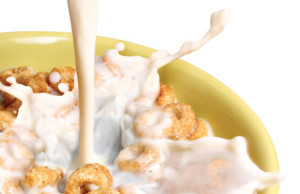The nutrient needs of the human population can be met through Cereal grains. They are the excellent sources of some nutrients, like any food. However, the vitamin content differs from one part of the grain to another.
Wheat has been associated with food uses for man intimately. The animal feed, kernel is the result of wheat conversion to a food product. The 25% of the whole grain amounts for secondary fractions like bran, red dog, germ and shorts produced by wheat milling industry.

Rice, a tropical crop, is one of the leading food crops of the world and is produced in all continents. Its yields are higher in temperate areas than in the tropics. Rice is comparatively high in caloric value, N free extract, and rice protein has a fairly good balance of the essential amino acids. Rice variety is divided by grain size and shape into three types, known as short, medium and long grain rice. Historically and now through planned breeding, each grain type is associated with specific milling, cooking and processing characteristics. There are number of rice varieties of each grain type in commercial production and new ones are continually in the process of being developed and released.
Barley, a crop with worldwide distribution, used in experimental genetic studies and with high degree of self fertilization is rich in starch and sugars and poor in protein and fat.
Millets have short growing season and can tolerate heat and drought conditions. They are of highly value in semiarid regions. Pearl millet is the most widely grown millet and is a very important crop in India.
Avena sativa is the common oat species of cereal grain grown for its seed are suitable for human consumption as oatmeal and rolled oats, one of the most common uses is as livestock feed. Oats make up a part of the daily diet of horses, about 20% of daily intake or smaller, and are regularly fed to cattle as well. Oats are also used in some brands of dog food and chickenfeed. Oat seeds are commonly marketed as cat grass to cat enthusiasts, since cats readily harvest and eat tender young oat, wheat, and some other grass sprouts.
Sorghum is a genus of numerous species of grasses, one of which is raised for grain and many of which are used as fodder plants either cultivated or as part of pasture. The plants are cultivated in warmer climates worldwide. Maize, wheat and rice together accounted for 87% of all grain production worldwide, and 43% of all food calories, while the production of oats and rye have drastically fallen from their previous levels.
